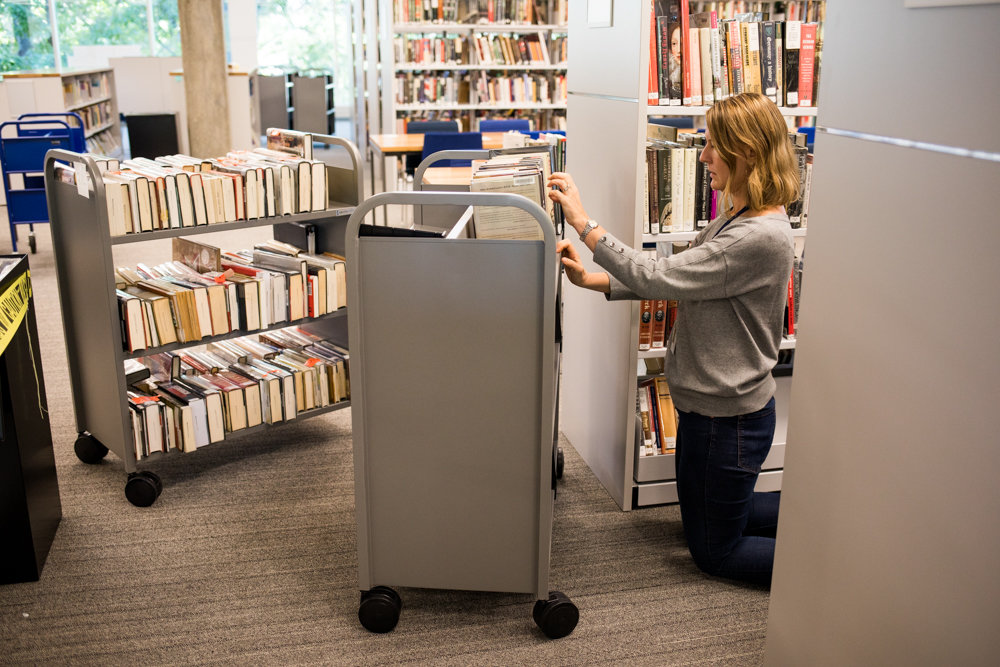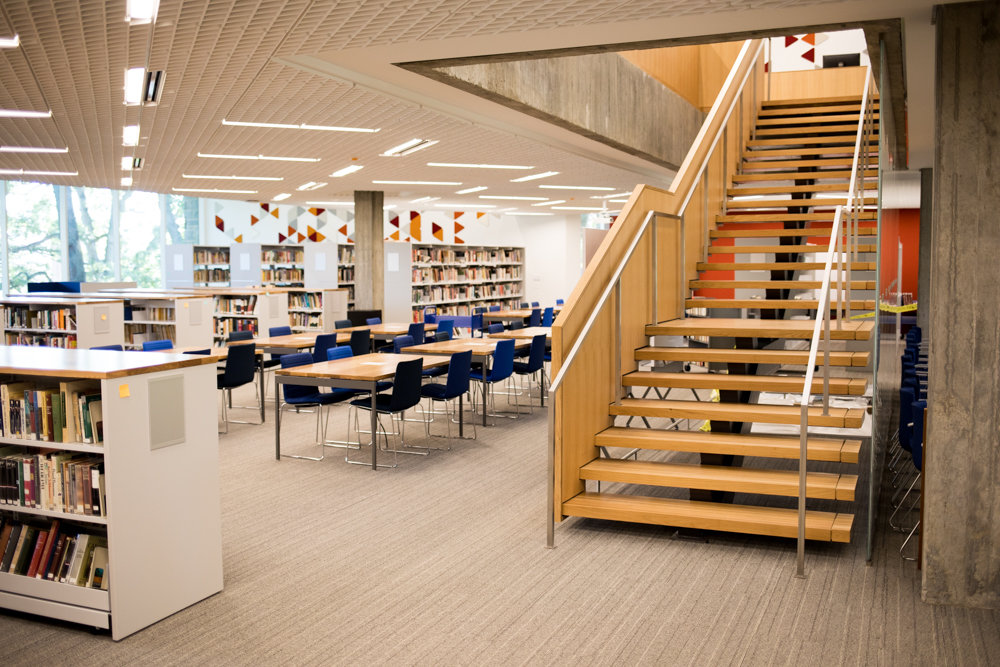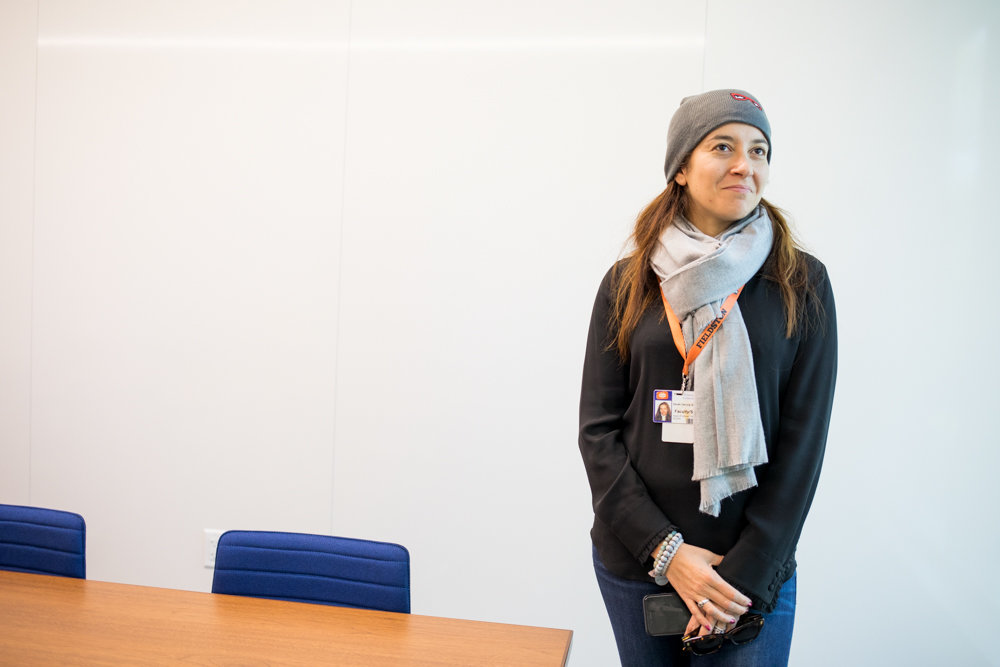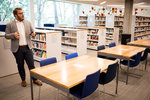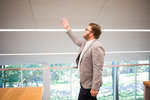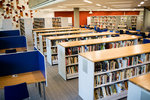Fieldston School library gets 21st century reboot
When it comes to the newly renovated library at the Ethical Culture Fieldston School, administrators have thought of everything from glass that prevents bird strikes to wooden tables that are designed to last the next 50 years.
The new Tate Library is part of a 16-month dream completed just in time for homecoming. While inside, this part of the school looks completely different — if anyone were to try and discover changes on the outside, they wouldn’t be able to, according to assistant head of school Sarah Danzig Simon.
“We basically built a new building inside,” she said. “All new systems, all new furniture. It was stripped down to nothing, and we really got a new library inside of an existing shell.”
The Tate Library project started in June 2017, and ultimately cost $16 million to build. It replaced the previous library that first opened in 1968. After 50 years of offering knowledge, Fieldston administrators decided the relic needed revamping.
The redesign, however, was a community effort. It included input down to the most minute details.
“Last spring, we did a ‘chair fair’ for the students and faculty, and the architects brought in a whole bunch of different chairs,” Danzig Simon said. “And it was a really great way to have some participation.”
Features also include audiovisual equipment, built-in speakers and projectors so students can connect their laptops or tablet computers — something library designers in the 1960s would’ve never imagined having to account for
Nearly every table has an electrical outlet for devices. And even if students aren’t at a table, a place to plug in is never too far away.
An entire wall in each of the study rooms is a whiteboard, which is not only magnetic, but awaits the extensive math equations or project outlines students might create there, said Kyle Wilkie-Glass, the school’s chief operating officer.
But there are spaces in the new library that are tech-free, for times when using something that requires electricity and a microprocessor is simply not desired.
“One of the problems we were trying to solve for the library was acoustics,” Danzig Simon said. “This ceiling treatment was especially done for our library to manage sound travel within the building.”
Through acoustical fabric lining on the walls and within the study rooms, the sound is muted to those outside. Through high-performance noise reduction technology, the library — which can hold hundreds of students — doesn’t mimic the ocean wave chatter of a lunchroom.
However, the Tate Library does mimic an environmentalist’s dream when it comes to its structure. Only LED lighting is used, and to prevent birds from flying into the windows, the school invested in Ornilux glass. While the glass appears clear to human eyes, for birds it’s opaque.
Even landscaping outside the library was done in a specific way to cater to native plants and animals in the area.
“One of our real beliefs and something that translates over into the ethos of the institution and coursework in a lot of ways is the environmental sustainability and care for the campus,” Wilkie-Glass said.
Windows can’t be opened, for example, which keeps energy inside.
The library was built by Architecture Research Office, the Manhattan-based firm led by Stephen Cassell, Adam Yarinksy and Kim Yao, which has worked with other private schools in the area as well as Brown University.
When the older library opened decades ago, students volunteered to bring books over from the old structure to the new one. Technological and study needs might have changed, but not the community the library creates as 50 years later, students are still moving the books — totaling some 50,000 in all.
“We really had a philosophy for this renovation that the last building lasted us nearly 50 years and we want this one too as well,” Wilkie-Glass said.
However, a library wouldn’t be much without its librarians, and the Tate Library is staffed by educators who are practically begging to be interrupted by students with their questions and needs.
Danzig Simon has fond memories of the old library, especially when she herself was a student at Fieldston in the mid-1990s. The library was very well used back then, and with a properly equipped space, she knows it will be again.
“Sitting down in the main floor in the spring, you could hear the faint noise of the trees outside and the kids on the quad,” Danzig Simon said. “It was sort of motivating to finish your work.
“It’s very meaningful to me to have been part of the renovation.”

